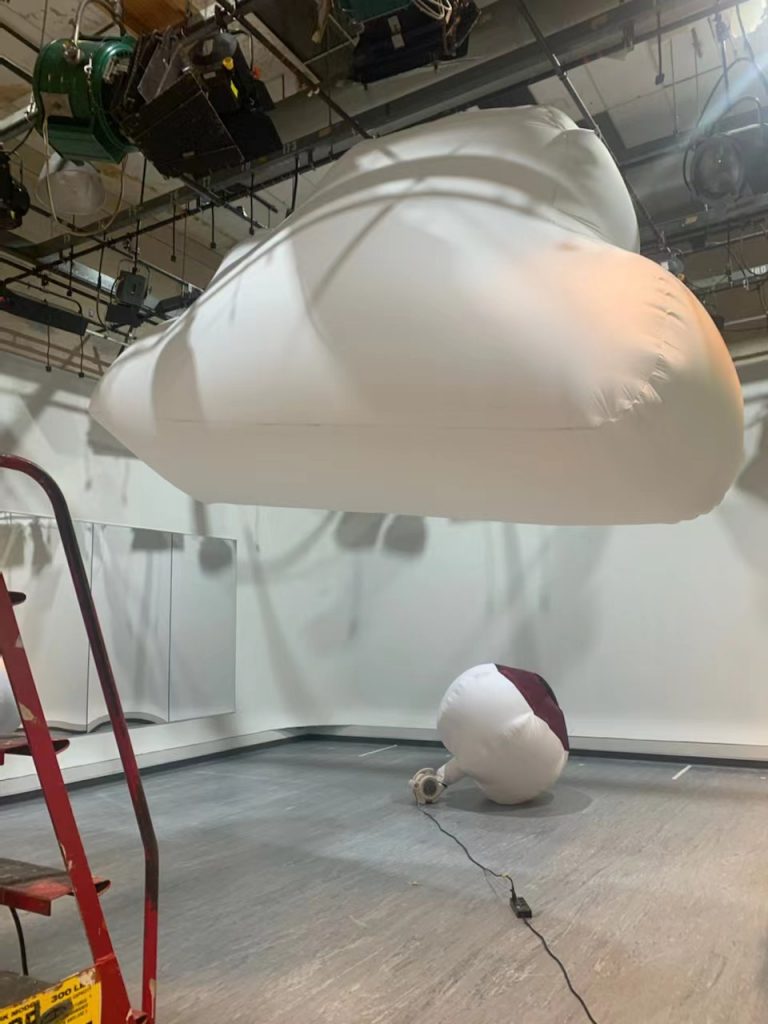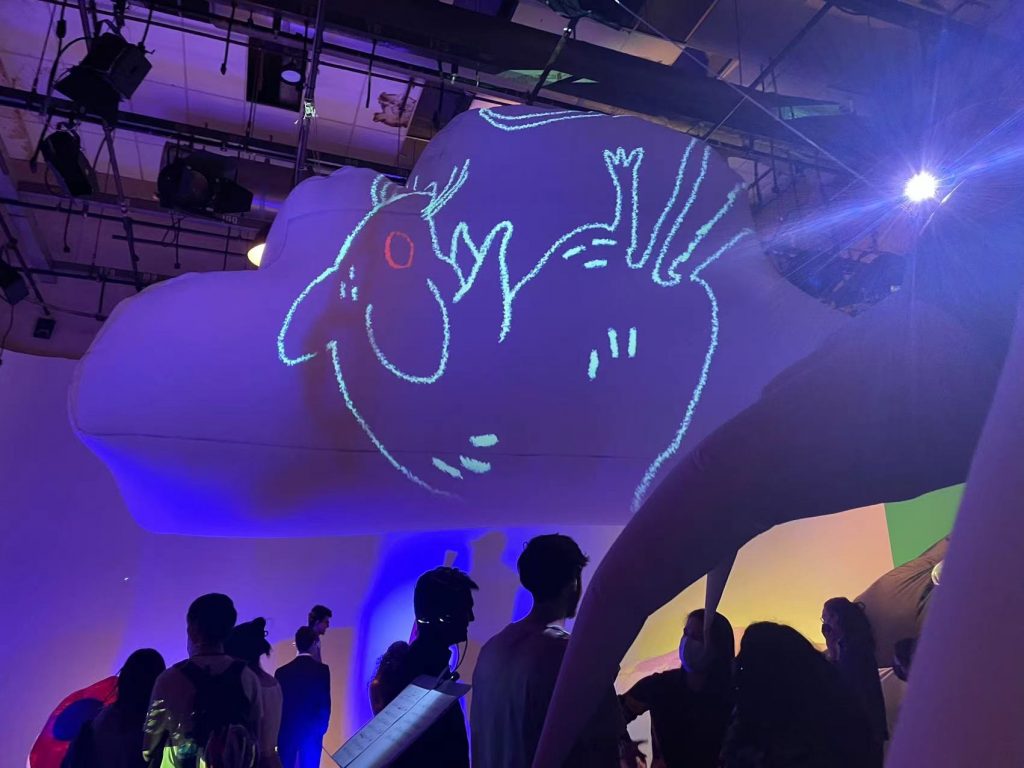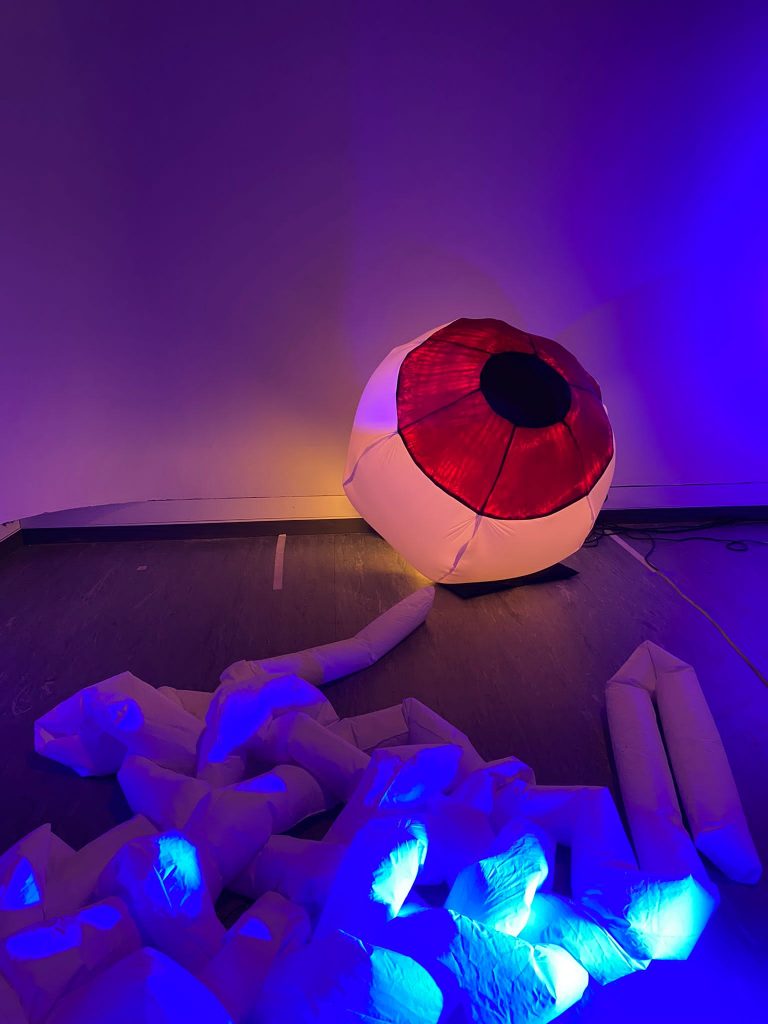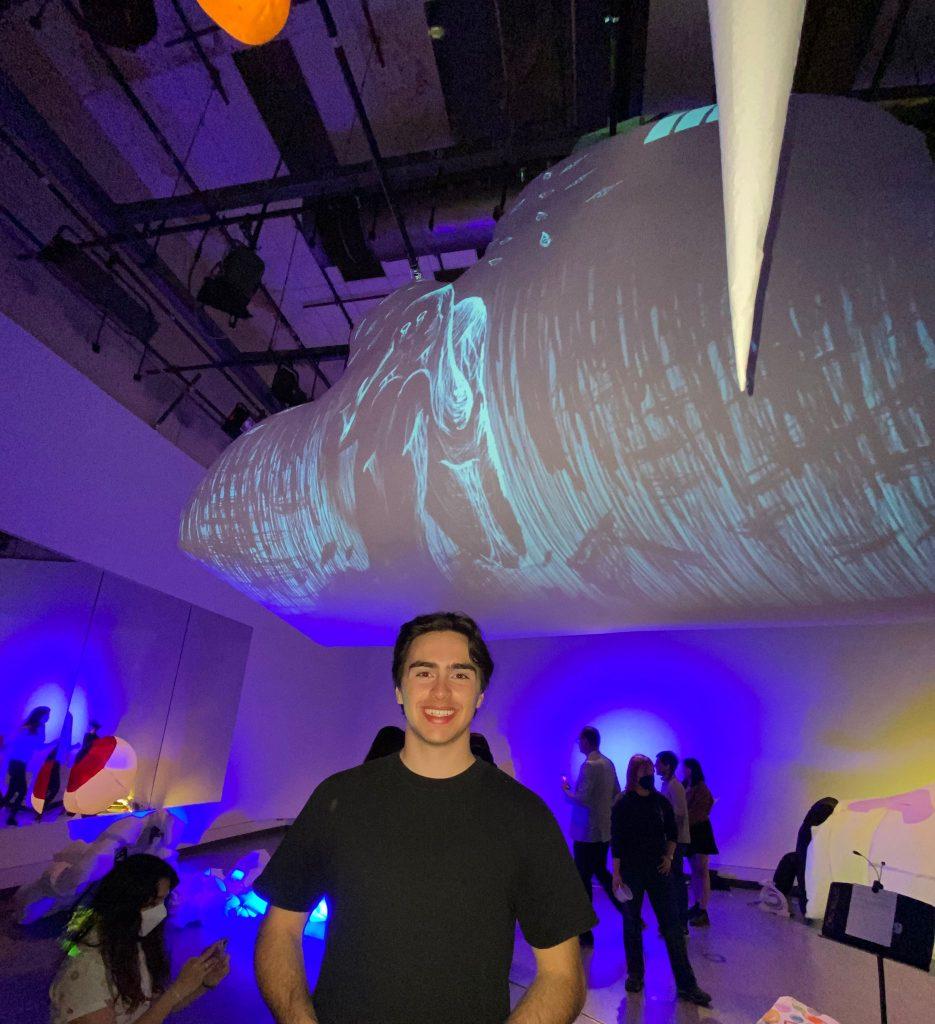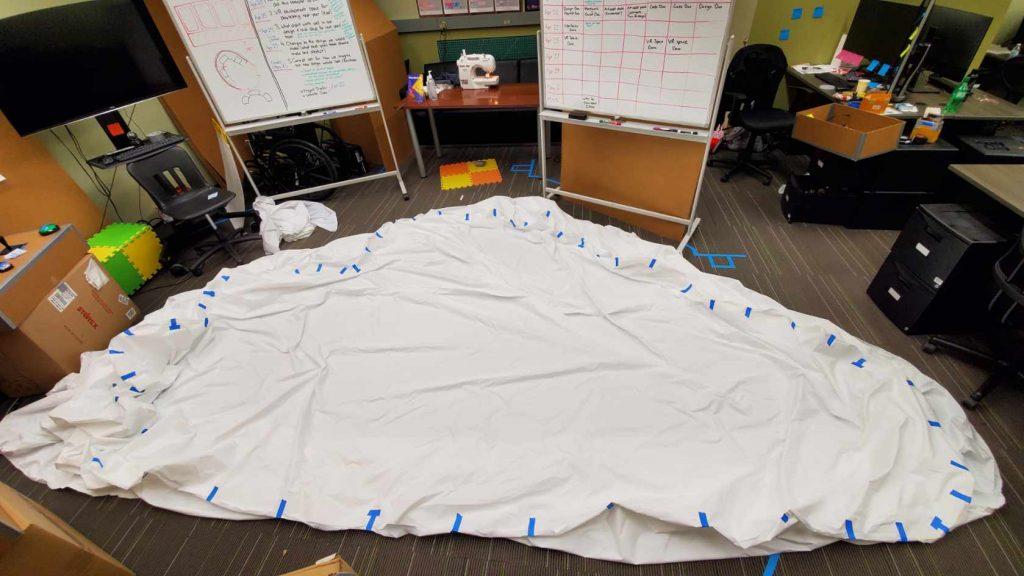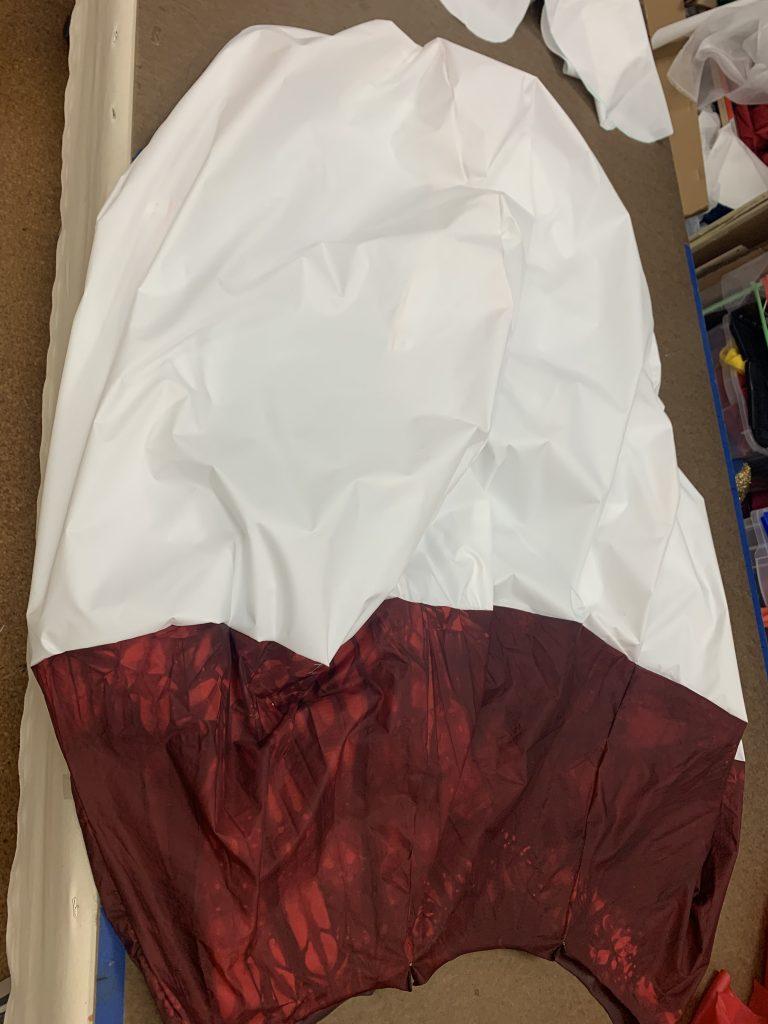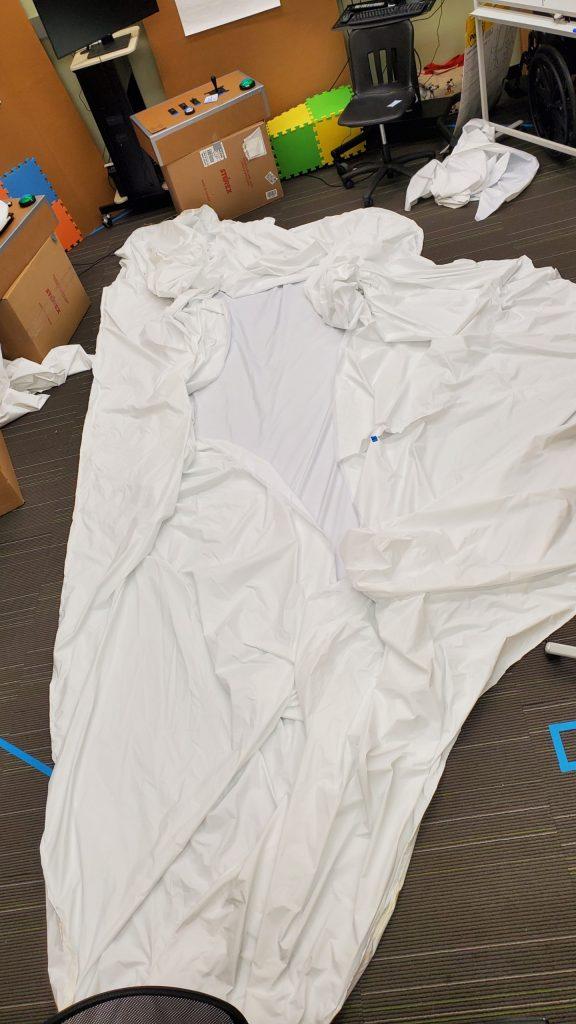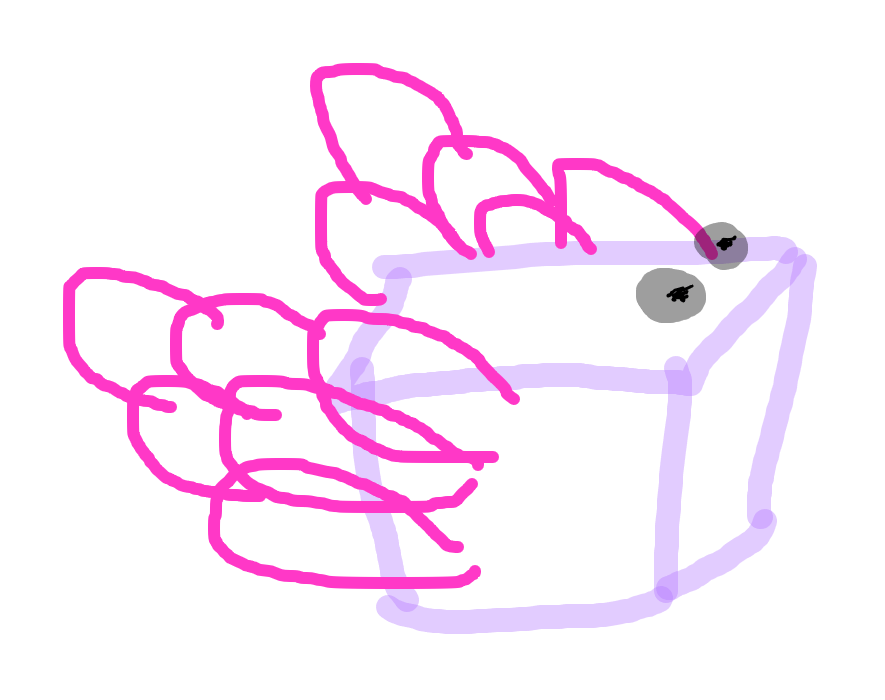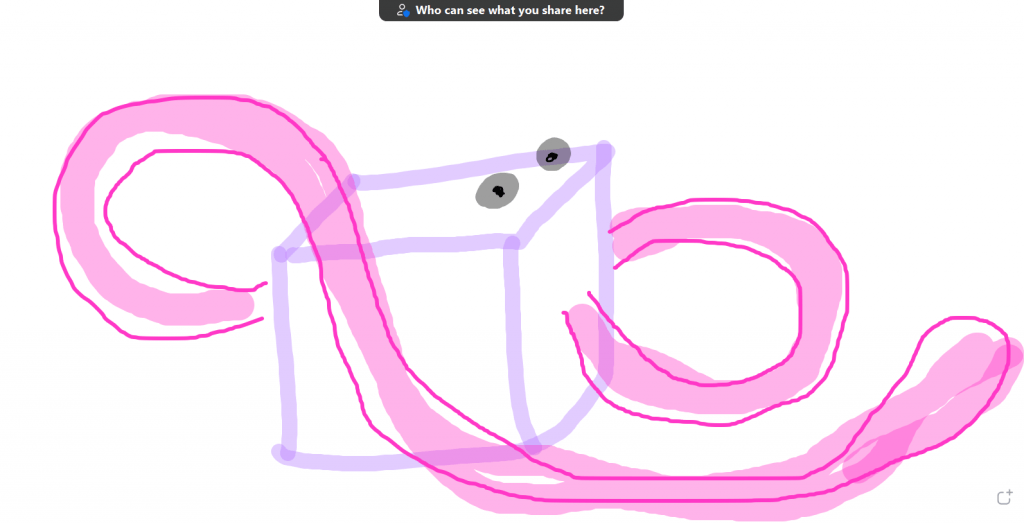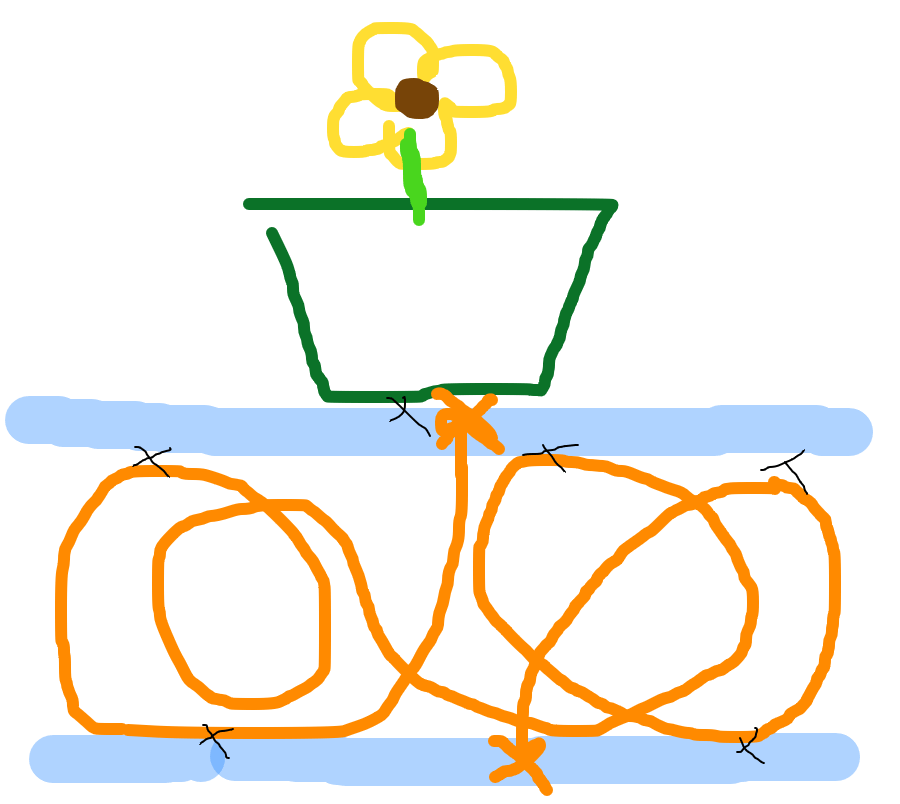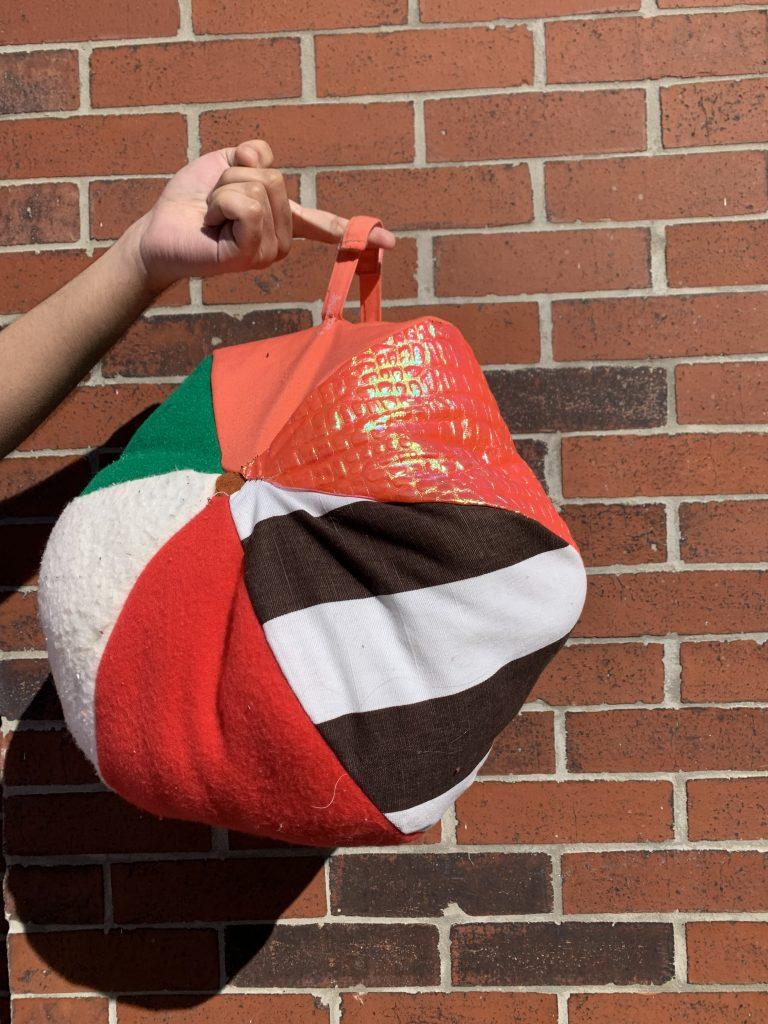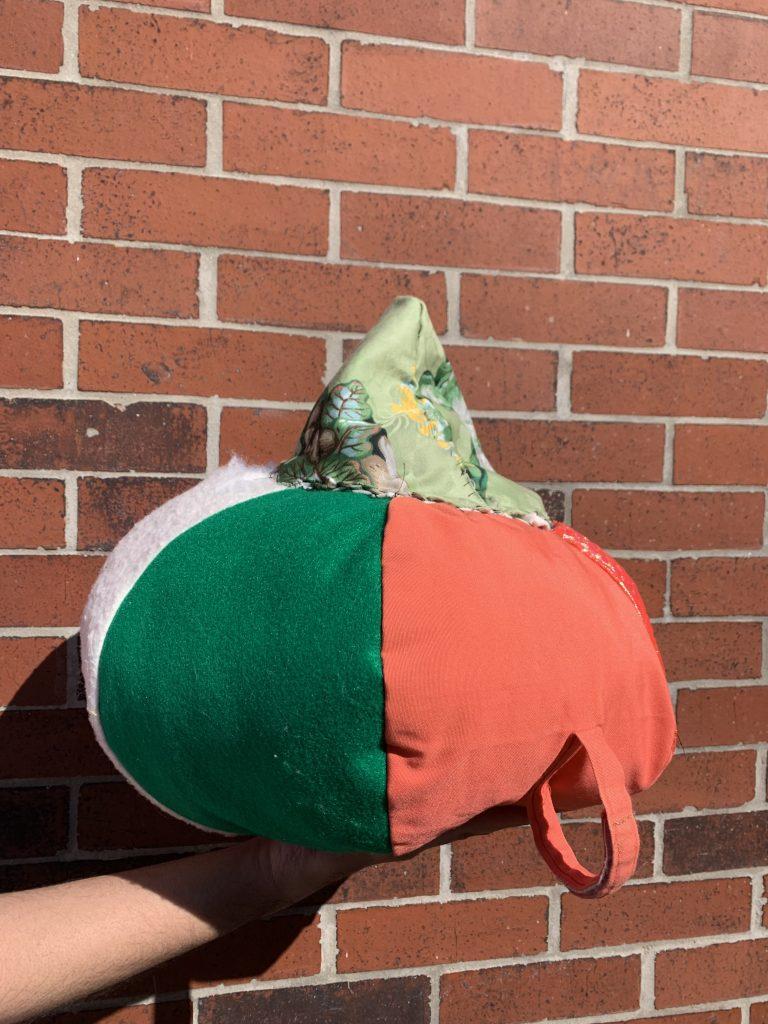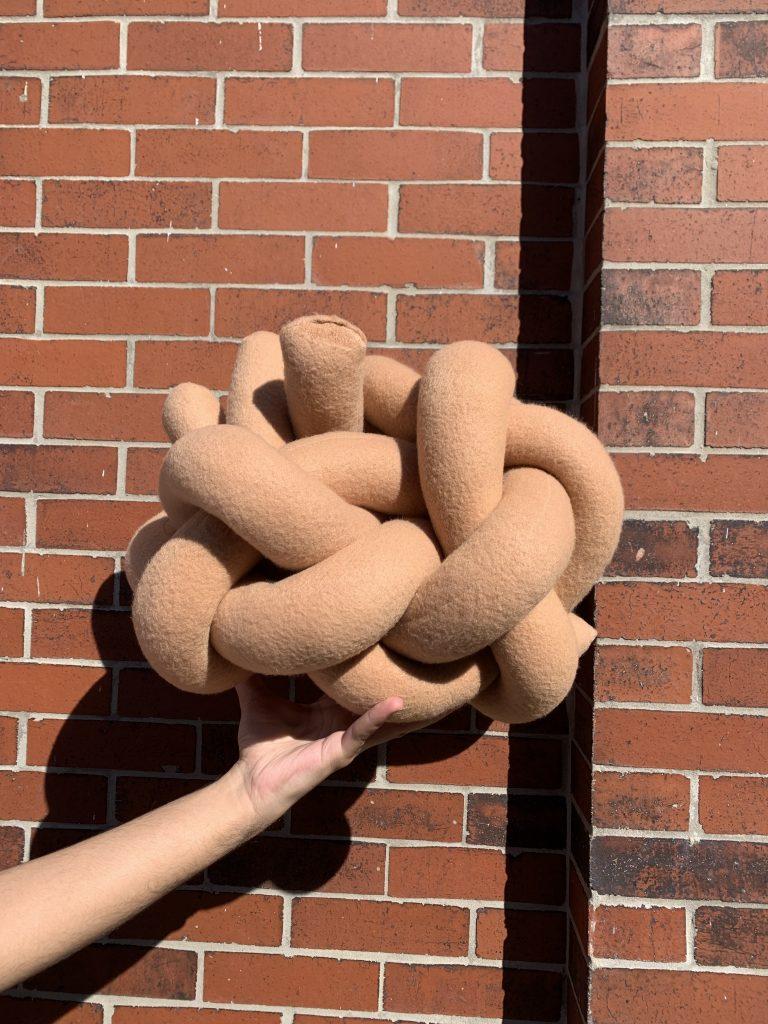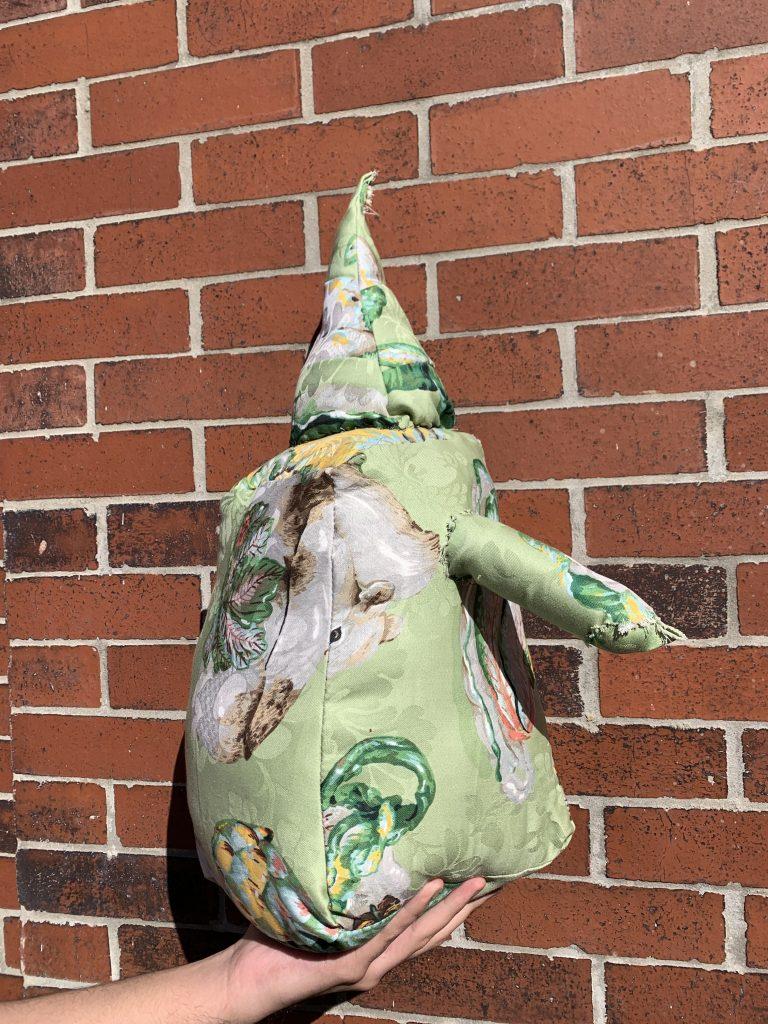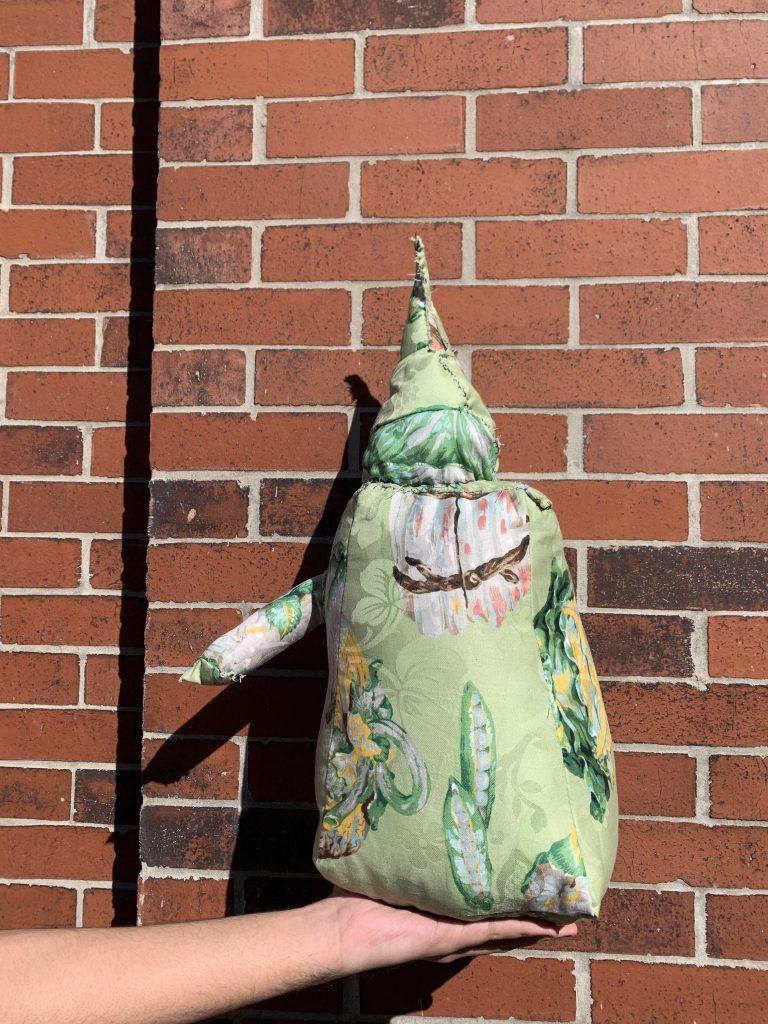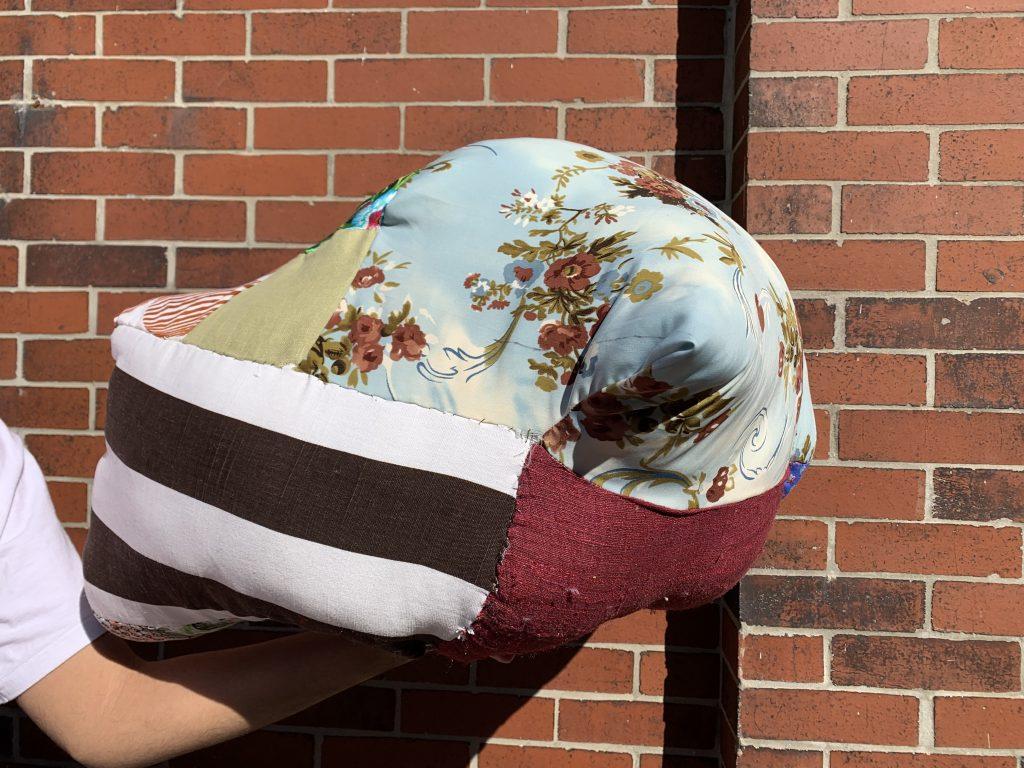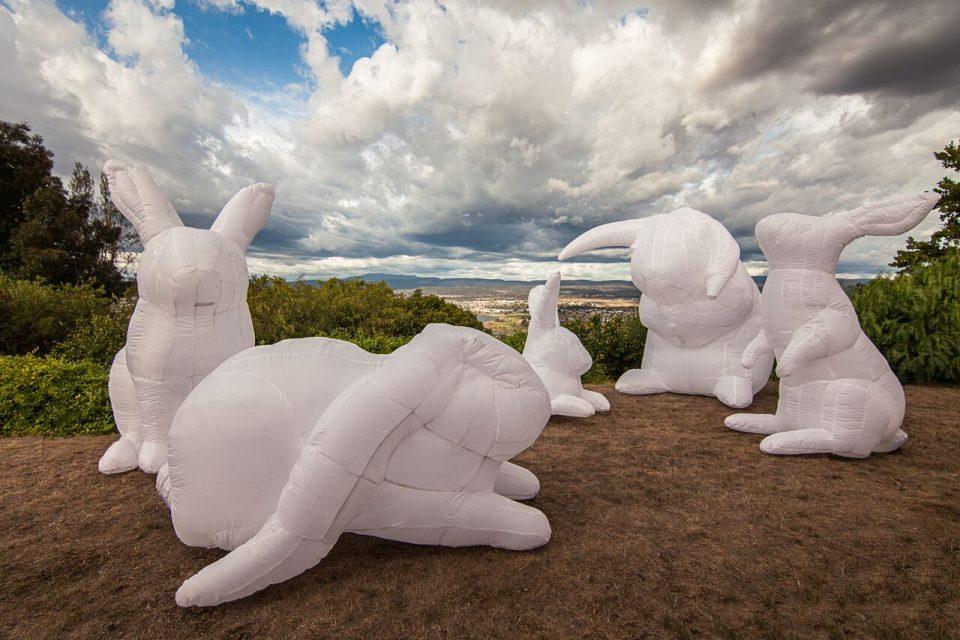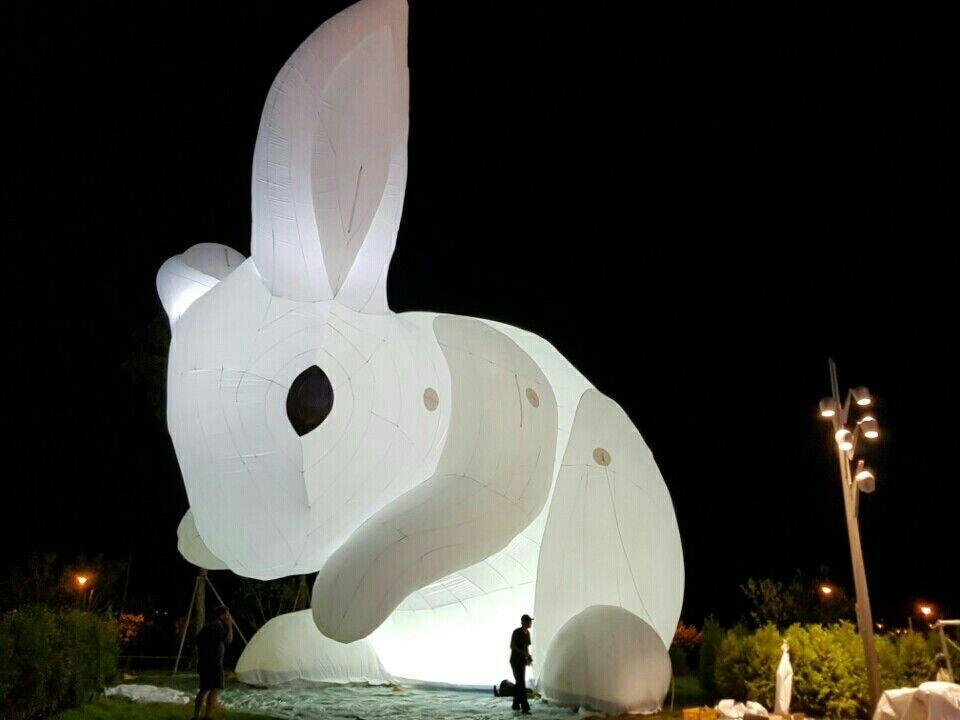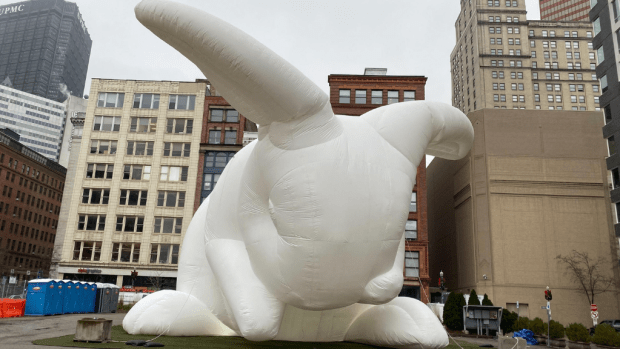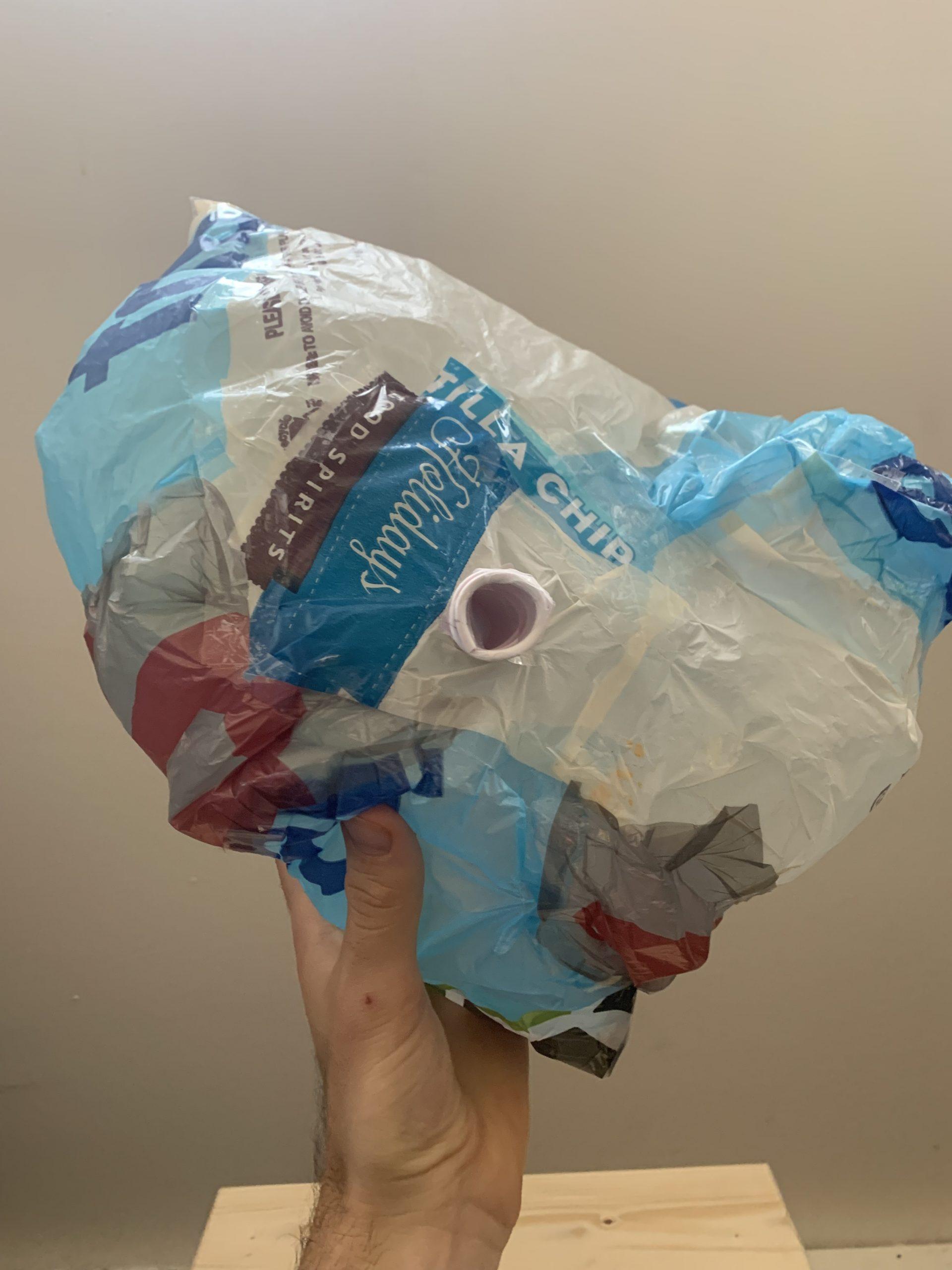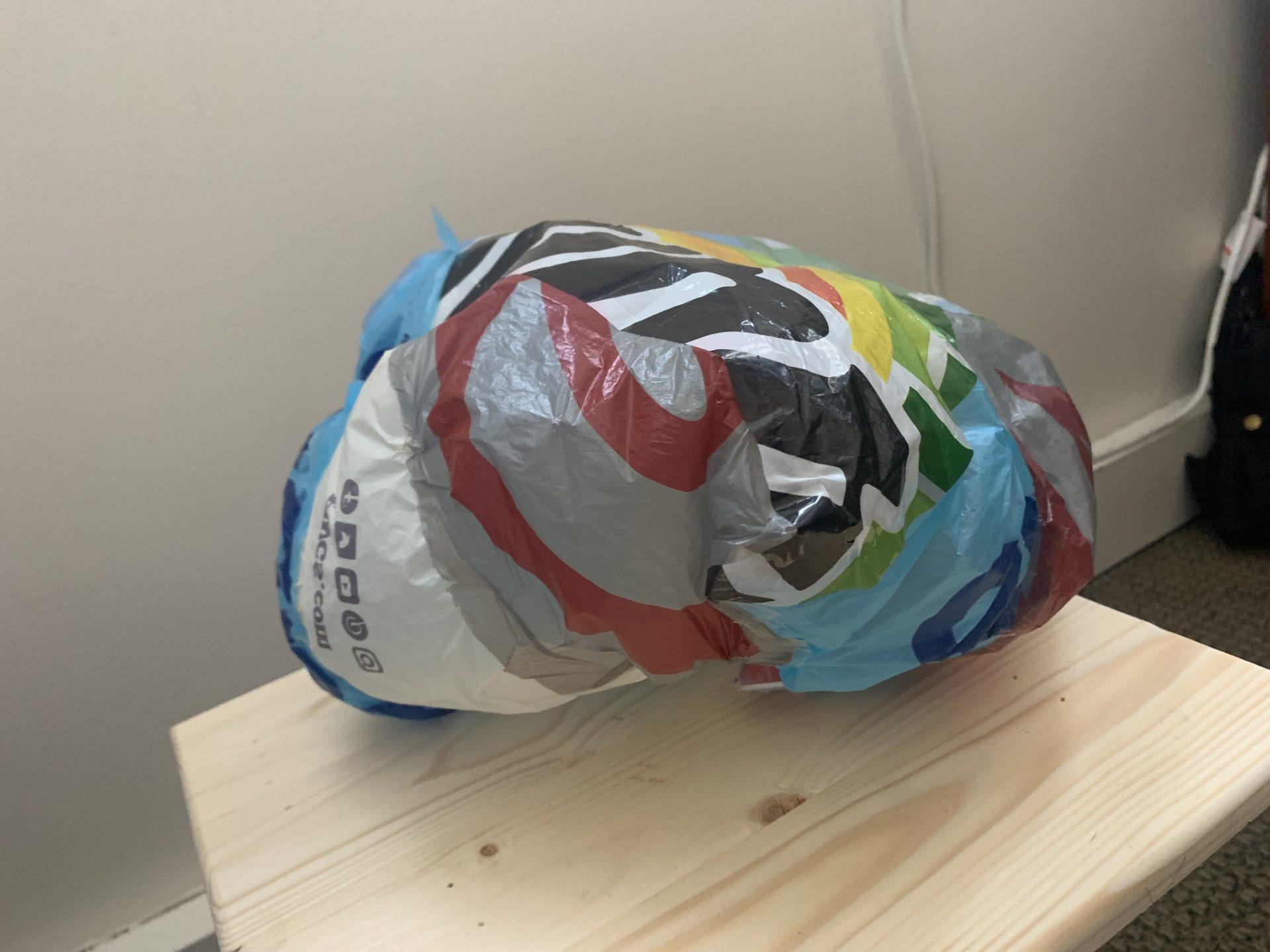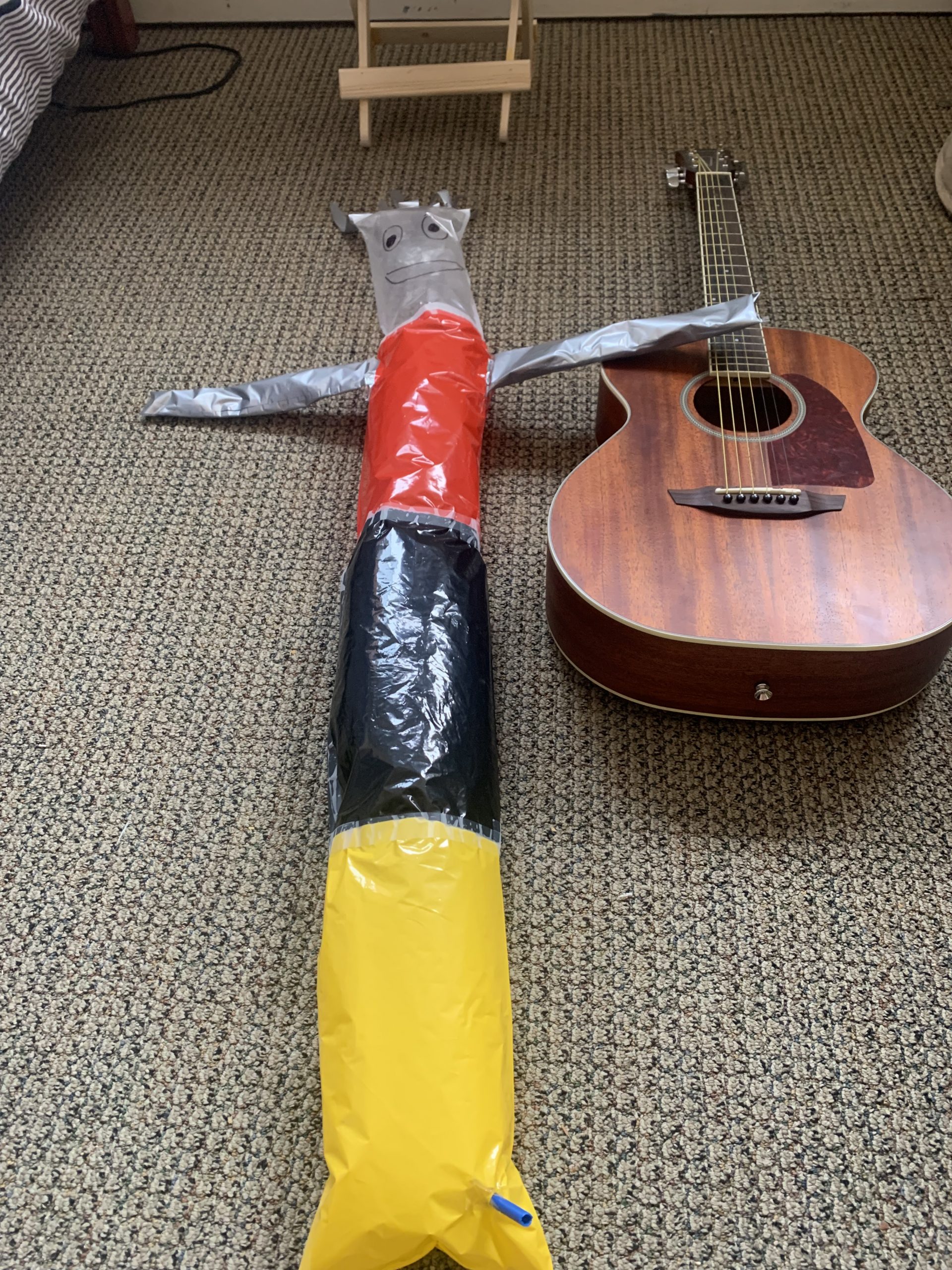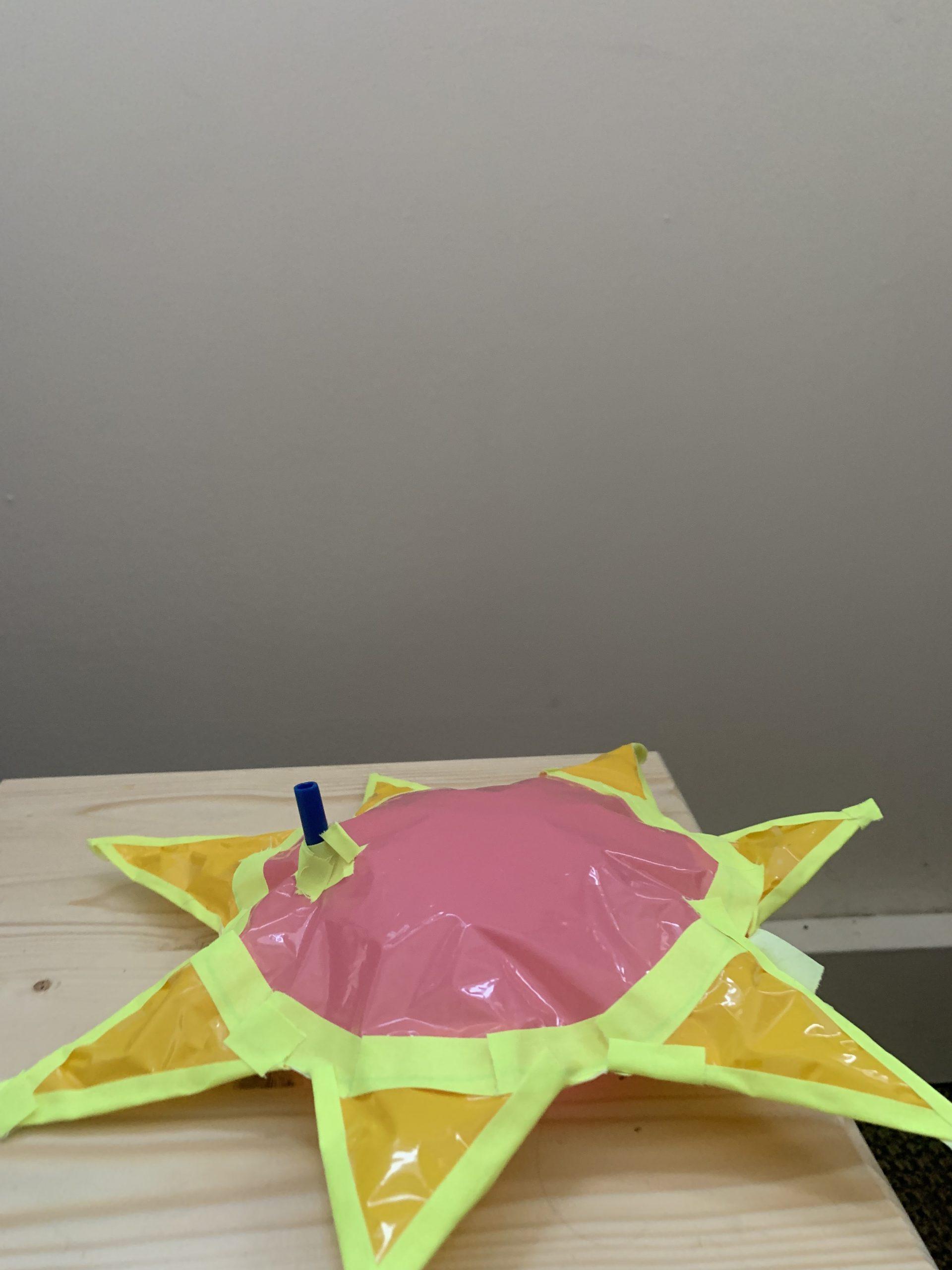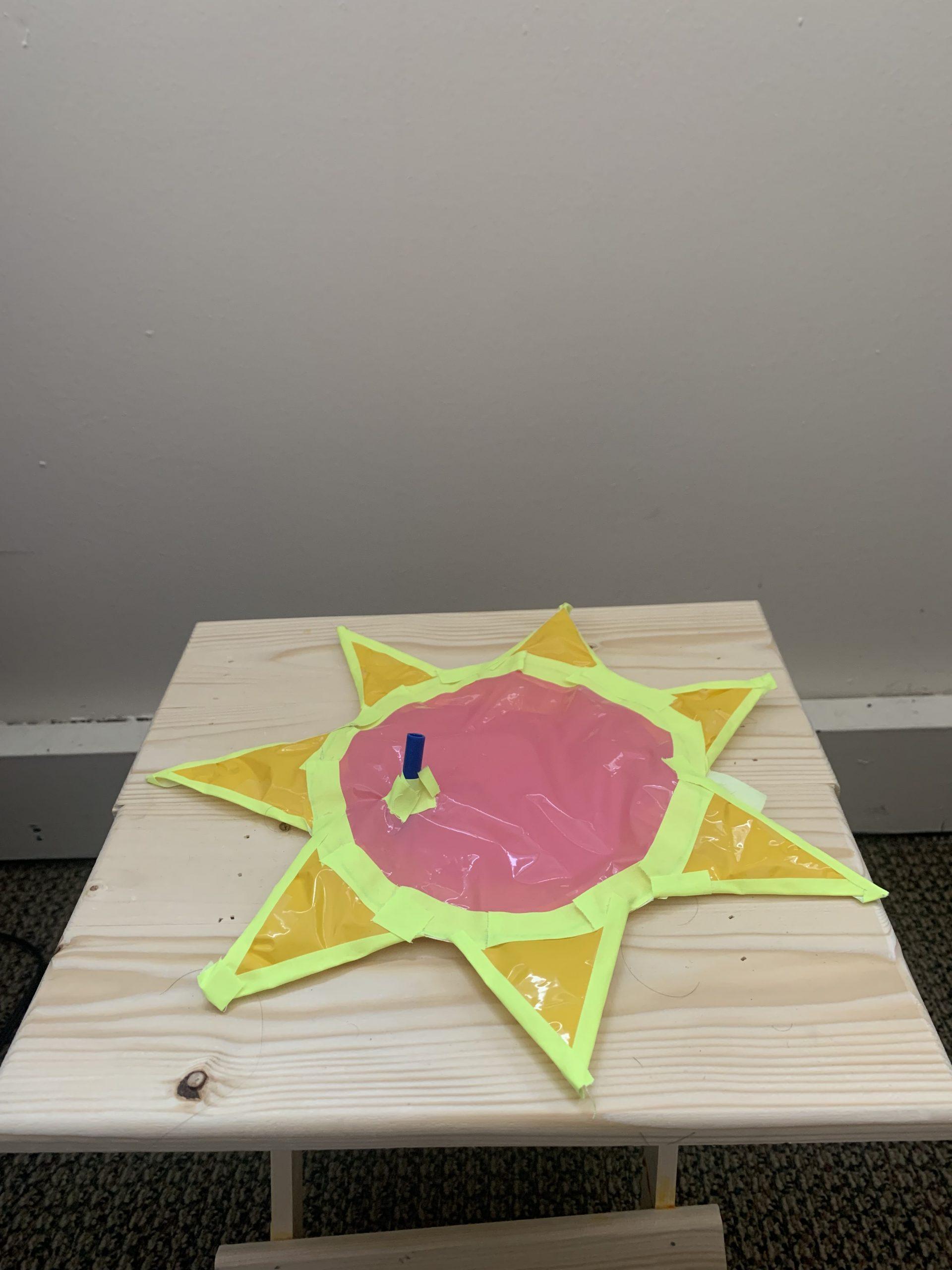Individual Questions
- What aspects of your project or process were most successful?
- What were a few of the challenges you encountered and how did you overcome them?
- What are the three top things you learned from this experience that you will take with you into future project experiences?
- What have you observed in yourself regarding your collaboration with teammates who bring different skills and experiences to the creative process?
- What is your number one piece of advice you would give to future students in this course?
Yiyang
- Our process of making the entire project is quite successful. We kept our plan simple and it was straightforward. Our making process was ahead of class and was on track of our schedule.
- Our installation process, however, was really challenging. We had to deflate it over the weekend and also took it down during the week. Thanks to Douglas, we had it up there again in the end.
- Double check with the person who is in charge of the installation process. In general, double check with people who were responsible for the space. And just to be safe, check it with the second person who is in charge or in use of the space.
- I created the Rhino file. Compared to making the object, I am much more confident and comfortable in making 3D models. Douglas and I also had much more time on campus and we traced all pieces for the project. In general I guess all of us are pretty flexible with our roles in the team.
- Be prepared to spend tons of extra hours outside the class. And prepare the final project as early as possible so it would not have conflict with other finals. For those who come from non-project based classes (STEM), this class is highly project-based and thus requires careful time management. Make sure you either have some free time on campus or have some free space at home to work on the project.
Lori
- I believe that the most successful part of our project was our time management. Our team was really on top of everything right from the beginning, and worked really efficiently. Our pipeline, from modeling and slicing in Rhino all the way through sewing our cut pieces of nylon worked really well.
- The biggest challenge was probably my lack of access to campus, in general. Because I spend most of my time away from CMU’s main campus at the ETC, it was sometimes difficult for us to coordinate as a team. We worked around this by having Douglas and Yiyang complete a lot of the patterning together, and then passing me the pieces to sew. Since I was able to check out a sewing machine and walking foot, I was able to sew up the entire cloud at the ETC rather than struggling to find time to go to Hunt. We also had to cut the optic nerve from our design, since we were using too much fabric. We got around this by instead changing the narrative of our piece by turning the eye to look at the nightmare cloud rather than being attached to it.
- First, I learned a lot about sewing and soft fabrication. I really enjoyed the practice I got sewing and learning about what causes wrinkles, folds, and errors while doing it. Especially since I am hoping to go into location-based themed entertainment, understanding different materials and assembly is really important. Second, I learned a lot about time management for a large-scale fabrication project and the importance of leaving time for iteration and corrections before installation. Finally, I learned how amazing it is to have dedicated, reliable teammates. We were able to accomplish so much because I knew my teammates were reliable and responsive, so even though we weren’t able to spend much time together, I still felt like we were a team.
- I really enjoyed listening to my teammates’ creative vision for this project. Both Douglas and Yiyang brought up narratives for our piece that I would not have considered, and their expertise in patterning was incredibly crucial to our team’s success. I am so appreciative of my teammates and of their different views, and I have found that it’s a lot easier to remain on schedule and remain accountable when you know you can rely on your teammates to do the same.
- Definitely start earlier than you think you need to; patterning takes way more time than actually sewing, so account for that when you plan your project timeline.
Douglas
- I believe we succeeded at making a large scale project that was challenging to create and install while still maintaining simplicity of design. This accomplished the original intention of working synergistically with the animation team to provide a large and awe-striking medium for projection.
- The installation of the cloud required a couple hours of working on a lift 2 stories above the ground for attachment of the inflatable to the ceiling. This along with a the need to tie it up and reinstall it due to miscommunication (being told we were able to leave the cloud installed in advance when in reality this affected other classes or events) was a challenge.
- I learned and will be applying in the future the knowledge and various tricks of sewing, how to use another form of computer aided design (Rhino), and the scale up process of how to take a small concept in my head and realize it on a large scale.
- I have been very grateful for each team member’s contributions and talents in this project. I believe our team became good friends and were able to pick up where someone left off or could enhance the performance of each other really well in each part of the project. I learned trust and got comfortable with the idea of leaving large tasks into the hands of team members which can be very stressful.
- The one piece of advice I would offer future students would be to design your final project focusing on simplicity of design. The project is complicated regardless just based on the sheer magnitude of the project, and one can always increase the complexity. But when supply or time shortages are a risk to completion, one will be very grateful that their project can be simplified to accommodate the new constraints.
Group Questions
- How did you generate the idea and starting point for the project?
- What was the path that you took from beginning to end to accomplish the project? Please upload 5-10 photos to illustrate your story.
- What were the challenges you encountered and how do your team overcome them?
- What were the “happy accidents” that you encountered along the way?
- Final Project: please upload 5-10 photos of your final project and 3 sentences that describe what your final project is (not what you intended, but what it is now that it is finished).
- Yiyang wanted to do something creepy, and so we started brainstorming about what that could be. We had the idea of doing a dark thought bubble that someone could stand under, as if it were reflecting their thoughts. From there we expanded on the nightmare theme, eventually introducing a brain, and then an eye when a brain proved to be too difficult.
- After establishing the nightmare implementation (eye to cloud), we modeled the whole thing in Rhino, then sliced the model into several pieces that we could pattern. Using the projection method, we traced brown paper versions of the different patterned pieces, then cut out nylon versions. To tackle the workload, we divided the project into the eye and the cloud. Douglas and Yiyang did a lot of the patterning work for both pieces, Lori and Yiyang dyed the nylon for the eye, Lori sewed the cloud, and Douglas and Yiyang sewed the eye.


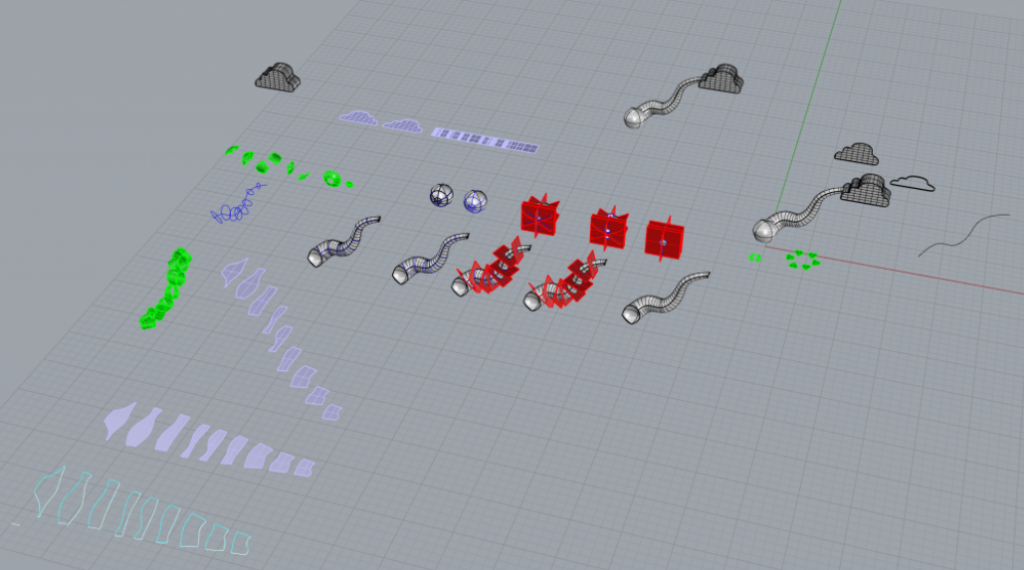

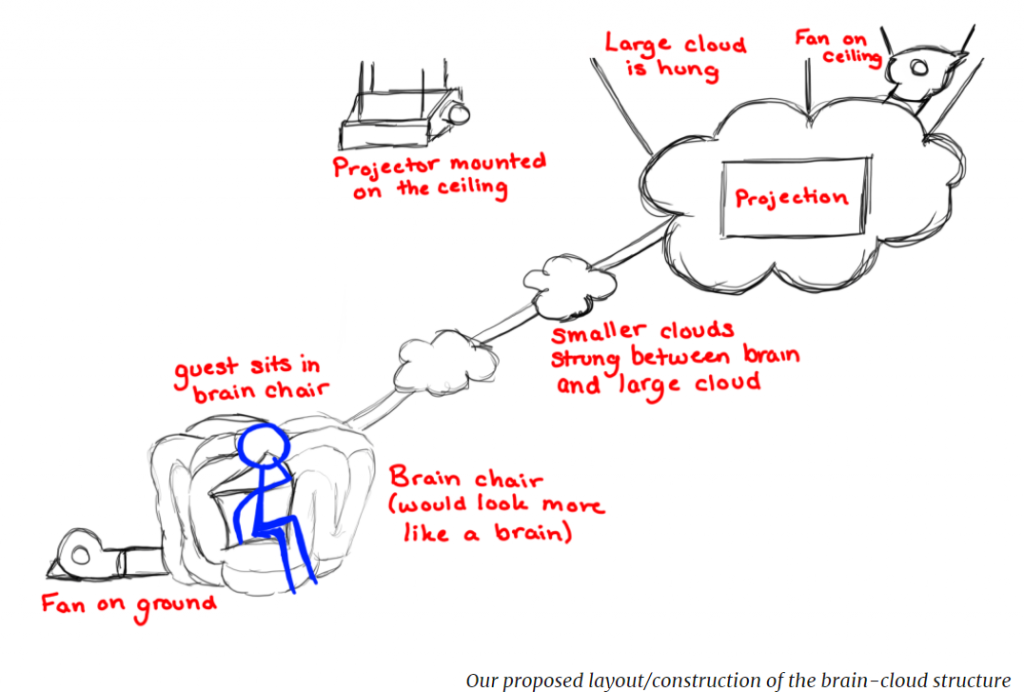
- Our team’s biggest challenge was the sheer size of our inflatable – especially the cloud. We also had to cut the optic nerve from our design because we would not have enough fabric to complete the whole piece. Additionally, because the cloud and eye are both simple forms, it was important to have clean, uniform seams, especially for the projections.
- Originally, we planned to baffle the cloud using extra large acrylic buttons. However, after fully inflating the cloud for the first time, we decided that we actually liked the rounder, bloated shape rather than a flatter projection surface, and decided to nix the buttons.
- Our neyetmare cloud is a ominous entity that looms over the viewer inspiring awe alongside a glowing, curious, and piercing eye that joined the viewers on the mortal ground. The cloud offers a large projection area offering flexibility for animation project and increasing the “mass” of the cloud even further because of the way the animations are brought to life at such a scale. The eye ball sits in the corner lit up with an LED light that highlights the dyed iris and giving it vitality.

